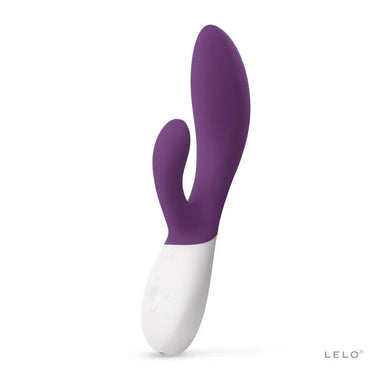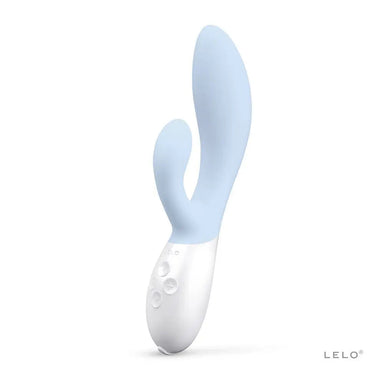Control Condoms Guide
Unprotected sex is only allowed to married couples or couples who trust each other. Those in short-term relationships should consider using condoms. However, how well a condom protects you depends on whether you use it the right way.
What are Control Condoms?
Control condoms have a special lubricant on both sides to help men who experience premature ejaculation. When men wear condoms, they can enjoy sex more and last longer during sex. The condoms are laced with benzocaine and lidocaine. Wiseman (2012) explains that benzocaine and lidocaine cause the penis to get temporarily numb during sex. Some condoms are controlled condoms without the numbing chemical agents but are made of thicker material.
Why Use Controlled Condoms?
Control condoms, as the name suggests, help men to prolong the love-making session by delaying the ejaculation to an extent. Delay condoms often contain a gel or cream with Benzocaine, a chemical known for its desensitizing properties. When the man's penis comes in contact with benzocaine, it will reduce the sensation for a few minutes allowing the man to last a few minutes longer.
For those with premature ejaculation problems, control condoms can be a blessing in disguise. It can delight her greatly as she can enjoy vaginal penetration even for a longer duration than the normal duration. However, this comes with health warnings. Few men are found to be allergic to benzocaine and develop redness, itching, swelling, or irritation when they come into contact with that chemical. In such cases, it is advisable to discontinue the use of that condom immediately and try natural methods to hold the ejaculation for a longer period.
Types of Control Condoms
Textured Condoms
These include studded and ribbed condoms. They feature a different pleasure compared to ordinary condoms since they are meant to boost your pleasure and that of your partner. If you wish, you can consider using textured condoms as part of foreplay. According to Kreuter et al. (2011), foreplay makes one relax and enjoy sex.
Latex, Plastic, or Lambskin
Latex condoms are the most common in the market and used by most people. Nevertheless, this might not be a great idea for others since their skin reacts with the latex material. If you are this kind of person, you can opt for the plastic or polyurethane one. Material that comes from lamb intestines is very helpful as it is used in the making of natural or lambskin condoms. They may help to prevent pregnancy but fail to protect you from sexually transmitted diseases since they have tiny openings just like the human skin.
Lubricated Condoms
Lubrication is a thin coating of liquid on the condom that prevents irritation and pain during sexual intercourse. Another advantage of the lube is to help the condom from breaking. In cases where you buy one and it fails to contain the lube then you can go ahead and use lube to make sex more comfortable. Make sure the lube is a water-based one so as not to react with the condom. Avoid using petroleum jelly as a form of lubricant since it damages the condom. Lubrication is very important as explained by Angel (2022).
Spermicide-coated Condoms
These condoms contain a chemical that kills sperm and lowers the risk of infections and pregnancies. You may be required to add a separate sperm-killing product since the ones in the condoms are always not enough. The product may sometimes be irritating to your genitals increasing the chances of contracting the disease.
Factors to Consider Before Purchasing Control Condoms
Buy the Right Size
Condoms are made in different sizes to suit people with different penis or vaginal sizes. Too tight condoms are more likely to break more so when having vigorous sex. On the other hand, a too loose condom is likely to fall off at any point. Therefore, you need to consider a condom that fits you just perfectly for maximum pleasure.
Contour
When buying a condom, always consider shape. It is a very important aspect that most people tend to forget. Some condoms are made to take a regular shape while others are more form-fitting. Always go for a more comfortable condom.
Tip
Some condoms are made with tips designed to increase sensation while others feature a nipple-shaped tip to hold sperm. Choose the one that will meet your needs fully.
Thickness
When choosing condoms always consider the ones that are thinner since condom-thickness may affect sensation and sexual enjoyment as well to some men. Condoms made from polyurethane are the best since they feature thin walls. On the other hand, some people prefer thicker control condoms to topical anesthetics, especially if they have allergies. Thicker condoms ensure that the man lasts longer during sex, but the downside is that they reduce the pleasure because they lower sensitivity. You need some sensitivity during sex to enjoy it.
Material
Some individuals have a latex allergy. According to Nucera et al. (2020), latex allergy has many symptoms, from conjunctivitis, itching, cramping, and low blood pressure, and therefore, allergic condom users should avoid latex material. They should instead seek alternative non-latex condoms such as polyisoprene condoms.
Texture
There is an assortment of condoms with a variety of textures. Some condoms are ribbed, others dotted, and some a combination of ribbed and dotted. People may opt for a textured exterior to increase pleasure for their partners.
Safety
Some control condoms include active ingredients that the user is allergic to, such as benzocaine. If a person is allergic to benzocaine and has lung issues, he should avoid the control condoms at all cost.
- Color
Did you know that there are condoms that glow in the dark? Well, condoms can have visual appeals such as bright and flashy colors.
How to Use Control Condoms
- Male Condoms
- Make sure the condom is in good condition by checking on the expiry date on the package.
- Carefully open the wrapper and take out the condom.
- Have its place on the tip of your fully erected penis with the rolled side facing outside. For those who are uncircumcised consider pulling back the foreskin first before inserting the condom.
- Ensure to leave a space of about a half-inch at the tip for the collection of semen. The space is also vital as it helps the condom not to break easily.
- Drive the air out of the tip by pinching it.
- Unroll it down your cock.
- Consider using enough lubrication such as K-Y jelly for easy insertion.
- Once you have ejaculated, before your penis gets soft, get hold of the rim of the condom and pull it out from your partner. Slide the condom off your penis carefully not to spill the semen.
- Wrap the condom in a tissue and throw it away.

Female Condoms
- Carefully open the wrapper and take out the condom.
- Ensure you are in a more comfortable position like squatting.
- Squeeze the sides of the inner ring at the closed end of the condom
- Just the way you insert a tampon, insert the condom into your vagina.
- To avoid slipping and tear you can consider using a water-based lube.
- Push the condom as far as it can go inside until you feel it resting against your cervix having the outer ring hanging slightly outside your body.
- With the help of your hand, guide your partner's penis inside the condom
- Once you are done with the sex, twist the outer ring and pull it out.
Safety Measures
The following are safety measures to consider when using control condoms:
- Always open the package carefully to ensure you do not tear the condom.
- Always ensure you have used the right lube to avoid breaking the condom.
- To men always use a new condom for every new erection.
- If you feel it tear during sex, stop right away and pull out so that you can change with a new one.
- Be keen enough when removing it to avoid the semen from spilling inside the vagina.
Frequently Asked Questions about Control Condoms
What is a Control Condom?
As earlier explained, a control condom is a special condom that can help men prolong their sexual intercourse and stay longer in bed than they would if they did not wear it. Control condoms come laced with a chemical coating to temporarily numbs the tip of the penis and allows him to enjoy thrusting for a longer duration. The condom makes the condom less sensitive and allows both partners to enjoy the intercourse. It gives both partners better satisfaction and intense orgasm as he can avoid premature ejaculation.
Should I Use Lube With Control Condoms?
Lube can always be used during sex, with or without control condoms, for the following reasons;
- The woman may not be producing sufficient lubrication, and if lube is not used, she may experience discomfort, pain, or injuries during sex.
- You may want to have more fun during sex, and hence you will add more lube so that there's more sliding and gliding.
- During anal sex, you must use lube because the anal canal does not produce lubrication naturally, and if you do not use lube, you will tear the tissues in the anus. The sex will be uncomfortable and painful.
How Do Control Condoms Work?
Control condoms work by preventing premature ejaculation. The condom comes laced with numbing chemical agents such as benzocaine and lidocaine, making his penis less sensitive and allowing him to stay longer during sex.
Control condoms delay ejaculation, lengthen intercourse and minimize stimulation by temporarily desensitizing the penis. They aim at making the penis less sensitive as possible. While men who don't suffer from penile sensitivity will go for the thinner condoms, those who suffer from premature ejaculation will seem to consider thicker condoms. The thicker condoms have one main purpose - to minimize the sensations that the penis is likely to feel if it weren't for the condom. The thicker condoms cause a barrier in a bid to decrease penile sensitivity.
Some condoms contain chemical agents such as benzocaine or lidocaine, which are available over-the-counter (OTC) as medications for pain relief. Benzocaine and Lidocaine are the main ingredients in most creams and sprays used for premature ejaculation. Benzocaine and Lidocaine temporarily numbs the penis and subsequently delay ejaculation.
Are Control Condoms Safe?
Benzocaine and lidocaine are the chemical agents used in the condoms to numb the penis. Control condoms are safe for some men but unsafe for those who are allergic to benzocaine and lidocaine. The control condoms are only unsafe if the partners are allergic to latex. However, the condoms have been checked by the quality authority and are always safe.
How Long Does a Man Using a Control Condom Last?
Studies have shown that a sex session should last for 7-13 minutes. Suppose the sex session is less than 2 minutes. This is referred to as premature ejaculation. Therefore, control condoms are recommended. Users have reported that when a condom has been laced with benzocaine and lidocaine, sex sessions can last up to 15 minutes. The effects of the control condom will diminish towards the end of a sex session or some few minutes after sex.
References
Frankiewicz, M., Połom, W., & Matuszewski, M. (2018). Can the evolution of male contraception lead to a revolution? Review of the current state of knowledge. Central European Journal of Urology, 71(1), 108.
Terris-Prestholt, F., & Windmeijer, F. (2016). How to sell a condom? The impact of demand creation tools on male and female condom sales in resource limited settings. Journal of health economics, 48, 107-120.
Steiner, M. J., Feldblum, P. J., & Padian, N. (2003). Invited commentary: condom effectiveness—will prostate-specific antigen shed new light on this perplexing problem?. American Journal of Epidemiology, 157(4), 298-300.
Steiner, M. J., Feldblum, P. J., & Padian, N. (2003). Invited commentary: condom effectiveness—will prostate-specific antigen shed new light on this perplexing problem?. American Journal of Epidemiology, 157(4), 298-300.
Wiseman, J. (2012). Tricks... To Please a Woman. SCB Distributors.
Angel, K. (2022). Tomorrow sex will be good again: Women and desire in the age of consent. Verso Books.
Nucera, E., Aruanno, A., Rizzi, A., & Centrone, M. (2020). Latex allergy: current status and future perspectives. Journal of Asthma and Allergy, 13, 385.
Wilson, S. L., Adam, J. K., & Krishna, S. B. N. (2017). Effects of vaginal lubricants on in-vitro progressive spermatozoa motility. African Journal of Reproductive Health, 21(3), 96-101.
Kreuter, M., Taft, C., Siösteen, A., & Biering-Sørensen, F. (2011). Women's sexual functioning and sex life after spinal cord injury. Spinal cord, 49(1), 154-160.




































